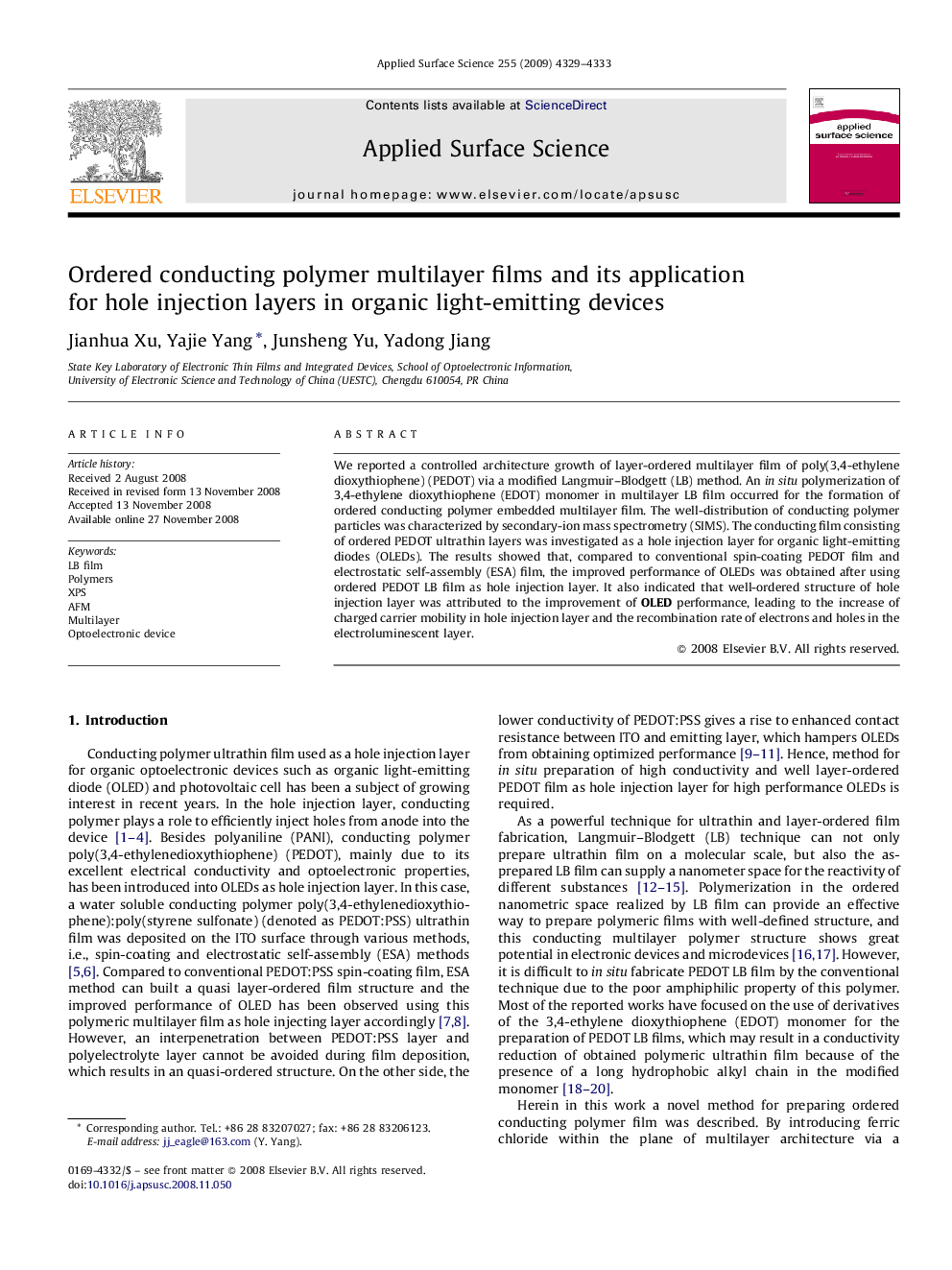| Article ID | Journal | Published Year | Pages | File Type |
|---|---|---|---|---|
| 5364486 | Applied Surface Science | 2009 | 5 Pages |
We reported a controlled architecture growth of layer-ordered multilayer film of poly(3,4-ethylene dioxythiophene) (PEDOT) via a modified Langmuir-Blodgett (LB) method. An in situ polymerization of 3,4-ethylene dioxythiophene (EDOT) monomer in multilayer LB film occurred for the formation of ordered conducting polymer embedded multilayer film. The well-distribution of conducting polymer particles was characterized by secondary-ion mass spectrometry (SIMS). The conducting film consisting of ordered PEDOT ultrathin layers was investigated as a hole injection layer for organic light-emitting diodes (OLEDs). The results showed that, compared to conventional spin-coating PEDOT film and electrostatic self-assembly (ESA) film, the improved performance of OLEDs was obtained after using ordered PEDOT LB film as hole injection layer. It also indicated that well-ordered structure of hole injection layer was attributed to the improvement of OLED performance, leading to the increase of charged carrier mobility in hole injection layer and the recombination rate of electrons and holes in the electroluminescent layer.
